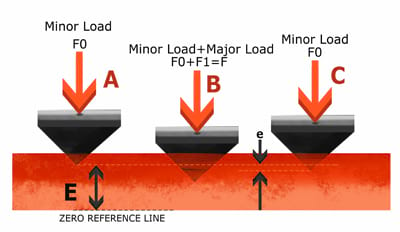
The Rockwell Hardness Test was designed to determine the compatibility of a material for whatever purpose it was going to serve. Used mainly for fields like engineering, manufacturing, and metallurgy, the Rockwell test has proven to be a rather valuable tool for any operator wanting to test out how strong and durable a certain element could be.
As far as the actual testers are concerned, it is safe to say that every Rockwell Hardness Tester Manufacturer out there have properly calibrated their machines to perform at any parameter. However, in order for an operator to really make the most of these devices, there are a few matters that they need to understand first.
Regular vs. Superficial
The concept of the Rockwell method is actually straightforward. Initially, the sample material is placed on the tester and a minor load is applied to serve as the zero point.
This would be then followed by the major load which would then create the indentation through force and a diamond-tipped indenter. After a few minutes of pressing on to the material, the major load is then removed and the operator gauges the strength of the material by the depth of the indentation made.
However, there are actually two different types of Rockwell test methods. These are the Regular method (or more commonly known as the Rockwell method) and the Superficial method (AKA Super Rockwell method).
1. The Regular Method
Since this is the conventional way of performing the Rockwell test, the initial force or load applied to the machine is always at 10kgf. As for the main force or the major load, it could vary between 60, 100, or 150 kgf.
The Regular Method is preferable when testing materials that are large or awkwardly shaped. As the depth of the indentation matters more in this test, the need to cut the specimen up or polish it to have a flat surface is no longer necessary.
When looking for a device for the regular method, it would be ideal that you determine the kinds of materials you need to test as well as their usual sizes and shape (the latter matters only if the material is prefabricated). A reputable Rockwell Hardness Testing manufacturer can supply you with an instrument that can accommodate samples of varying size, shape, and type.
2. The Superficial Method
As the name implies, this method is the “lighter” variant of the test. In fact, this variant of the method was designed to test the hardness of small or thin components such as material treatments, small joints, and bolts. It may even be used to test the hardness of a material whose hardness value is often outside the Regular Rockwell scale.
The initial load in this variant is at 3kgf. As for the major load, it comes at 15kgf, 30kgf, and 45kgf depending on the material’s size, thickness, and shape.
Despite these differences, the hardness values for both regular and superficial Rockwell methods are interchangeable. A Rockwell Hardness tester manufacturer may even set up features in their devices that allow an operator to convert these values instantly.
Applying the Rockwell Scale
So as to make the Rockwell method applicable to various sectors, several variations of the Regular and Superficial tests have been designed. These processes greatly differ from each other through:
A. The types of indenters that were used. In addition, any scale that uses a diamond indenter is alternatively called the Diamond Hardness Test.
B. The magnitude of the the total test load; and
C. The scale division.
All in all, there are nine different Rockwell scales to be applied for both the regular and superficial variants.
i. HRA – This scale uses a 6-kgf major load while also using a 120° diamond spheroconical indenter made out of diamond. It is usually applied for materials like Tungsten carbide.
ii. HRB – This scale uses a 1/16 inch sphere made out of steel and used to test aluminium and other softer steels.
iii. HRC – In this scale, 150kgf is applied to hard steel materials while using a diamond indenter.
iiii. HRD – A 120° diamond spheroconical indenter is used while 100kgf is applied to the material as a main load.
v. HRE – Like Scale D, 100kgf is applied to the material but a steel sphere indenter will be used.
vi. HRF – This scale uses 60kgf as a total force and uses a 1/8inch steel sphere indenter.
vii. HRG – This scale uses a 1/8inch steel sphere indender while applying 150kgf on the material.
viii. HRH – This scale is often used to test materials like Aluminium, Zinc and Lead through using a steel sphere indenter that applies a total of 60kgf.
ix. HRK – The last scale on the Rockwell series of tests, Scale K uses a steel sphere indenter that applies 150kgf. This test is often used for materials like alloy, tin, and plastic.
In Case of Breakage
A direct consequence of conducting a hardness test is that you will eventually reach the material’s breaking point. However, every test that ends with the specimen breaking should not be considered as a waste of time.
In case a material does break under the load, one must immediately conduct a Rockwell Failure Analysis. This process is designed to help the operator determine why the material broke and at what point under the test.
A reliable Rockwell hardness tester manufacturer will provide each of their devices with a guide on how to perform a failure analysis; especially on what to look for and when. If done right, the analysis can help you identify a superior alternative material for future testing or production cycles.